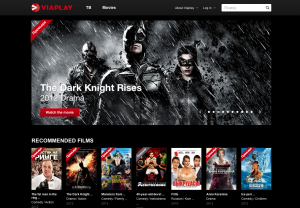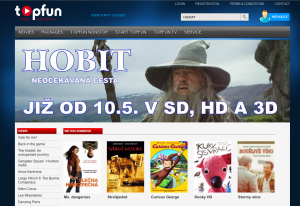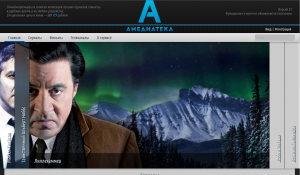
After more than 40 years of operation, DTVE is closing its doors and our website will no longer be updated daily. Thank you for all of your support.
The eastern OTT frontier
Central and eastern Europe’s online video space is rapidly evolving. Andy McDonald looks at some of the most recent developments.
Away from Netflix’s heartland of the US and western Europe, central and eastern Europe’s over-the-top and video-on-demand industry is experiencing much growth and change. While premium content providers are rushing to deliver ‘TV everywhere’ services and broadcasters are looking to establish their own catch-up TV options, pay TV operators are also building out their own OTT services and are going up against new independent players in the market.
But how effectively are these different solutions meeting consumers’ demands to access content as and when they want, what can they learn from existing deployments and where is the CEE market headed?
The past year has seen much activity in the CEE online video sector. Recent months alone have seen Ukrainian cable operator Volia’s launch of Volia Smart HD, a hybrid cable/OTT service that will expand its reach off-net as well as providing a platform for advanced interactive services, while Amedia, one of Russia’s biggest producers of content, has launched its own premium service after securing a raft of premium western content from the likes of HBO and CBS.
Elsewhere, incumbent operators like Cyfrowy Polsat, T-Hrvatski Telekom and Telekom Slovenije have broken ground with their own online services, which they have built alongside their own pay TV offerings, targeted at a slightly different user base, while pay TV providers like CME, Viasat and HBO have built a strong cross-territory following with their Voyo, Viaplay and HBO GO services respectively.
Without the entrance of the big-name and big chequebook-carrying players like Netflix and Amazon’s LoveFilm, a clutch of local online-only operators have also sprung up, such as TopFun in the Czech Republic and a number of services in Russia – including the Gazprom Media-owned Now.ru and Tvigle, as well as Stream.ru and Ivi.ru.
This fertile CEE video marketplace only looks likely to grow as internet and web-connected device penetration grows. According to Informa Telecoms & Media, online video accounted for only about 12% of all internet traffic in the region in 2010. However, this is tipped to jump to about 27% by 2015. The number of connected devices – including connected TVs and hybrid set-top boxes – is also due to dramatically increase from an in-home connected device install base of around 6.1 million in 2011 to just shy of 100 million by the end of 2016. Informa predicts this “will continue to fuel additional OTT-service launches”.
Expanding outwards
Modern Times Group-owned pay TV operator ViaSat kicked off its online efforts with the launch of Viasat OnDemand back in 2007 – a service that gradually evolved into Viaplay. Initially launching in the Nordic region, the service offers a film and TV package and a package of TV, film and sport. Last year the firm expanded the service into Russia – a move that required different rights deals to be negotiated. Starting at the end of December 2012, Viaplay’s content catalogue included recent box-office hits from Warner Bros, Sony Pictures Television, Twentieth Century Fox Television Distribution and NBCUniversal International Television Distribution. It also has rights to content from Russian studios, all for a monthly cost of RUB395 (€9.20).
As in the Nordics, the Russian ViaPlay is both a standalone service for its broadband customers as well as a TV everywhere solution for Viasat premium TV subscribers. However, a further expansion into the Ukrainian market has seen the firm establish the service solely as a complimentary service for premium linear subscribers. Commenting on Viaplay’s move into the Russian market, Viaplay CEO Niclas Ekdahl says that the service is a complement to Videomore – an online video site from Russian media firm CTC Media, which is also part-owned by MTG – and is not a conflict of interests for Viasat’s parent firm.“Videomore is an advertising-funded platform where customers go and watch typically TV series and programmes that have been on CTC’s linear TV channels,” says Ekdahl. “Viaplay is a paid-for service with a subscription fee and in Russia it’s mainly movies. So it’s rather a complementary service. We also have, I wouldn’t say a firm partnership, but we have good links between the sites, so if you are on Videomore, you can then access the links into Viaplay quite easily.”
Though Viaplay is subscription service, Ekdahl says he also sees a lot of potential in the CEE market for ad-funded VOD. Viasat already runs a service along these lines in the Czech Republic, which he says is having “really good traction”. In Bulgaria it runs a service called Novplay, and it has an equivalent in the Baltics where it also operates free-to-air channels.
“Looking at the advertising market, there’s a lot of spending going on through the online area, and I think what we provide there is a rather safe environment where there is a lot of professional content, with high production value,” Ekdahl says. Especially compared to other sites where there can be a huge volume of “user-generated and randomised content”.
Central European Media Enterprises (CME) is active in CEE in the commercial and sunscription TV space. CME operates businesses in six central and eastern European markets – Bulgaria, Croatia, the Czech Republic, Romania, Slovakia and Slovenia – across which it owns 34 TV stations. CME launched video-on-demand service Voyo in early 2011 in the Czech Republic, initially as a free offering. It has since positioned it as a pay service and expanded it across all six of its territories, with users able to access it on connected TVs, PCs, tablets and smart-phones.
“CME’s strategy is ‘one content, multiple distribution’ and this says everything about the company’s approach,” says CME senior vice-president and head of Voyo Constantin Mocanu. He claims that CME’s TV presence and content delivery knowledge “makes the difference” and allows it to generate relevant content for the local audience. “Being part of the industry where research is a very important tool, traditional broadcast observes that consumers’ habits are changing quickly, the big screen is replaced by small portable screens and mobility is mandatory. We know that and we’re prepared to meet consumers and their needs wherever they are,” he says.
In spite of this, Mocanu believes that there is still lots of room to grow as the CEE market becomes increasingly connected and tech-savvy. “There’s still a big category of people using smartphones only to text and call. There are still consumers who buy smart TVs only because they’re slim, without getting them online. There’s still a big lack of trust in using modern payment methods. Imagine that in Romania there are 13 million credit and debit cards in use and only 240,000 are used for internet payments,” says Mocanu. In spite of this he believes “we’re working in a fresh market with a great potential to develop.”
While CEE is widely seen as a growth market, not all signs point to a simple upwards trajectory for the players currently battling it out in the online video space. Erix Uxa, project manager at Czech Republic-based TopFun claims that the advent of digital switchover may in fact have brought with it a temporary slowdown in the VOD market, as many users are now able to access additional content, without paying for a satellite or cable subscription.
“Customers are simply choosing the free digital TV service, DVB-T, which is bringing with it a little bit of lack of the interest for VOD services,” Uxa says.
Dedicated online video business TopFun dates back to 2006 though the service has evolved greatly in that time, with a turning point coming in 2010 when the firm acquired content from major US studios like Universal and Warner Bros, says Uxa. Today some 80% of content sold or purchased or sold on the site is this western inventory, compared to 20% local and independent distributers’ content. With a focus on feature films, TopFun is, by Uxa’s admission, “pretty new to SVOD” having previously concentrated on a transactional business model. However, it now offers two tiers of subscription package – one costs CZK49 (?1.90) per month to access a rotating selection of 50 movies per month, the other is priced at CZK189 and offers hundreds of movies per month. Both packages are available from the web, smart TVs and smartphones.
Both TVOD and SVOD have their advantages, Uxa says. Transactional allows it to carry the most up-to-date films, including Hollywood blockbusters, while SVOD appeals to a different customer – more interested in constant access films that are less popular or not as well marketed.
“TVOD sells better than SVOD and SVOD is something that generates more money in the end – so both are very important for VOD services,” says Uxa. However, he adds that “for SVOD it is always more difficult and very expensive to acquire content from major studios, so SVOD is always more likekly to include local content or independent distributers’ content, which affects the customer.”
Premium content
One firm that recently staged a major coup when it comes to acquiring top premium content for its new OTT service is Amedia. One of Russia’s biggest producers of TV and films, Amedia was founded in 2002 by Russian producer Alexander Akopov and now claims an annual production volume of more than 200 hours of content across various genres – including dramas, mysteries, thrillers, romantic comedies and sitcoms. However, for the new Amediateka.ru site, Amedia has licensed major US series, signing deals with the likes of HBO, Showtime, Fox and AMC.
This online push may be seen as an extension of Amedia’s broadcast business, which began in 2011 with the launch of an Amedia-branded basic cable and satellite channel. The firm now runs two basic, and one premium, linear TV channels and Akopov says that he has big expectations for the new OTT offering – which will cost RUB229 (?5.37) per month following a first month introductory offer.
“We really have big hopes, because we see the demand. There is a lot of this kind of content currently available through the pirates; we know there’s audience for our content, and we hope there will be a switch from pirated sources to legal,” says Akopov. “We have some arguments for why this might happen – because it is a clean legal service, high quality and [has] lots of additional features, like recommendations and the possibility to talk to your friends at the same time as you’re watching video.”
Another factor is that with official agreements in place, Amedia is given advance copies of the US shows so that it can dub and prepare Russian-language versions that can be put live online “a minute after the US premier has finished” – another advantage over the pirates. Though online piracy has long been a blight in Russia, Akopov believes the market may be reaching a turning point with new piracy legislation already under discussion in the Russian parliament and a broader groundswell of support among the creative industries. “I think that there is more understanding in our society of the necessity to protect intellectual property,” says Akopov. “What’s important is that the film industry is not alone, and that this time we do this all together with the music industry, with publishers and even with the internet industry which is also quite big in this country, distributing their programmes and apps legally. There’s a huge group of people who don’t want to go to piracy if the content is available legally. That was actually the main problem we had in previous years – lots of people think that they will go to the pirates because the content that they want to see is not readily available. Now we have closed a big gap with US premium content here, so there’s a completely different situation compared to what it was a year or two ago. I think that practically everything people want to watch is available legally on the net in the Russian segment of the internet.”
While there are various different players competing in the Russian market, such as Now.ru and Viaplay in the feature film business, Akopov believes that Amedia’s focus on US TV content differentiates it from its rivals. It is also a reason why it has not chosen to populate its new OTT service with its own content. “Our own content is available across various OTT services – we have them under non-exclusive licences, probably on five or six services simultaneously,” says Akopov.
Indeed, the licensing and windowing of content is a major, and often tricky concern, particularly when content owners are also simultaneously trying their hand in the OTT space. BBC Worldwide is a case in point. The BBC’s commercial division launched its Global iPlayer initiative in 2011 as a way to take the ‘best of British’ content to European fans – both drawn from the BBC’s archive and independently produced content that BBC Worldwide distributes. The service is now live in 16 markets – 14 in western Europe, plus Canada and Australia.
Discussing BBC Worldwide’s digital footprint, Linda Passey, head of digital, CEMA says that selling content into CEE and taking advantage of the OTT players now in this market is a difficult balancing act. “We have a very wide range of interests, so the way that we operate would be extremely different from how the studios operate. I think they have very clear and very structured windowing in each territory, but we have such a diverse catalogue and wide range of interests – for example we have our own channels, we license to pay TV platforms, over-the top services and are also thinking about our own direct-to-consumer platforms. So we don’t really have a one-sized fits all, which I think works really well for us.”
One thing that is clear is that the potential for OTT is growing. According to Informa Telecoms and Media, OTT video subscription revenues in Eastern Europe are due to climb from virtually nothing in 2011 to US$297 million (€223 million) in 2017. Transactional revenues are tipped to rise from US$2 million to US$71 million in the same timeframe.
Difficult environment
CME’s Mocanu says that though the region’s new OTT players are “struggling like everyone else in a difficult macro environment”, the good news is “that competition in the OTT area is still underdeveloped and content acquisition prices are still somewhat friendly. Western countries have a different trend in developing new technical achievements, things have been done naturally, in time. Meanwhile, in eastern and central Europe the speed is different, we’re ‘burning’ many stages,” he adds, saying Europe is already making a “giant leap” to OTT.
Ekdahl won’t reveal Viasat’s future plans for Viaplay, but admits that “we will probably not stop at the Nordics, Russia and the Ukraine.” And others are likely to be thinking along the same lines. Though Netlfix’s next anticipated European launch is unlikely to be in CEE, there is no reason to suggest that in time it won’t be in its sights as it aims to fulfil its stated ambition – to establish itself as a global company. Other major companies operating in western Europe also seem well placed to push East – for instance Amazon-owned LoveFilm or Germany’s Maxdome. Watch this space.





